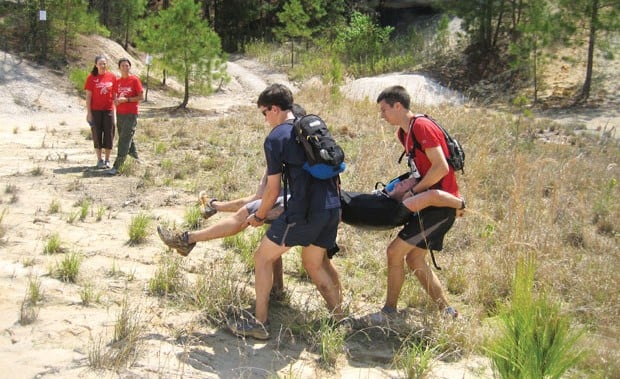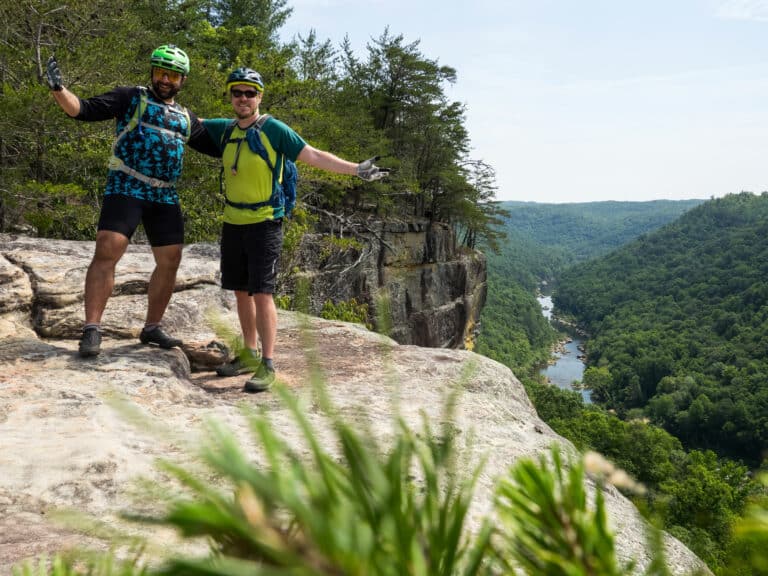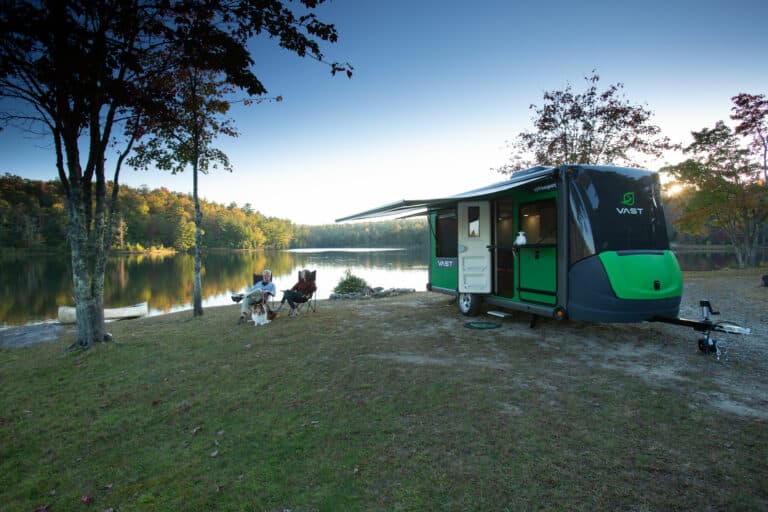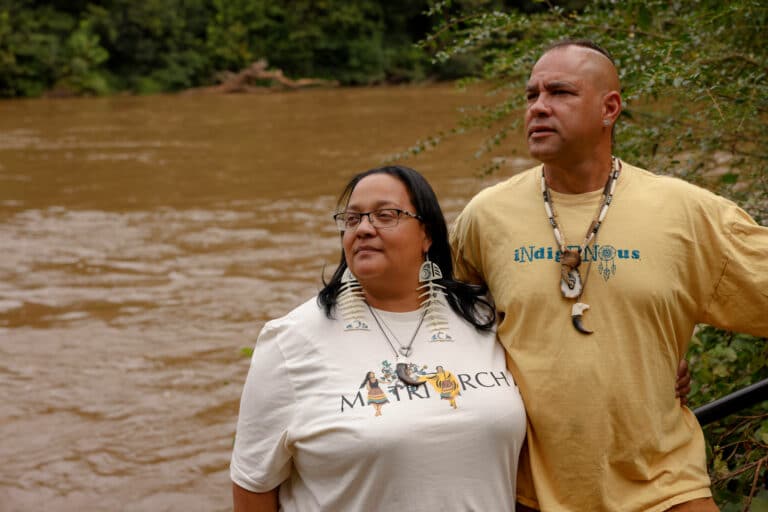Hashey’s team passed the mountain bike evisceration scenario by following this step-by-step approach that, according to Caudell, is typically ignored by doctors and laymen alike.
“Each situation presents a learning opportunity for the med students and doctors involved,” says Caudell. “You’ll learn how to splint in the field. You’ll learn how hard it is to carry somebody out of the woods.”
Most racers lack any true wilderness medicine training, so Caudell encourages them to start thinking about how they’re going to handle various scenarios before they even set foot at the starting line by requiring each racer to pack an emergency medical kit filled with items they think they’ll need in the field.
Hashey packs only the bare necessities: triangle bandages, a pocket mask and oral airway, pliable aluminum splints, an epinephrine pen, and a few common medications like benadryl and aspirin.
“You can always spot the new racers because they have giant bags with heavy items they’ll never use,” Hashey says. “What I love about wilderness medicine is you have limited resources in a hostile environment. You only have so much in your bag. Your job is to get the person back into the expedition as quickly as possible.”
Luke Smith had several common medications in his medical kit along with a cereal box just in case he had to splint someone. But he regrets not packing a pocket knife.
“One of our teammates got a pretend fish hook in his eye,” Smith says. “If we had had a pocket knife, we could have cut one end of the hook off, then fed it through his eye and patched him up. But we didn’t have a knife, so the guy had to keep the hook in there for the rest of the race.”
Charles Mock is a paramedic who’s competed in—and won—a variety of MedWAR challenges since 2004. He says Caudell’s MedWAR scenarios are as close as you can come to experiencing real life wilderness trauma without putting yourself in danger.
“I worked in Virginia for a while and had to do a lot of wilderness medicine on rescue calls. You can’t imagine how difficult it is to treat someone in a cave until you’ve had to do it. In that situation, you can only carry with you what will fit through a hole. You have to figure out the rest,” Mock says, reminiscing about a 16-hour-long cave rescue. “How do you get a person with a broken leg through a tight hole that you have to contort yourself through under the best circumstances? Lots of patience.”








